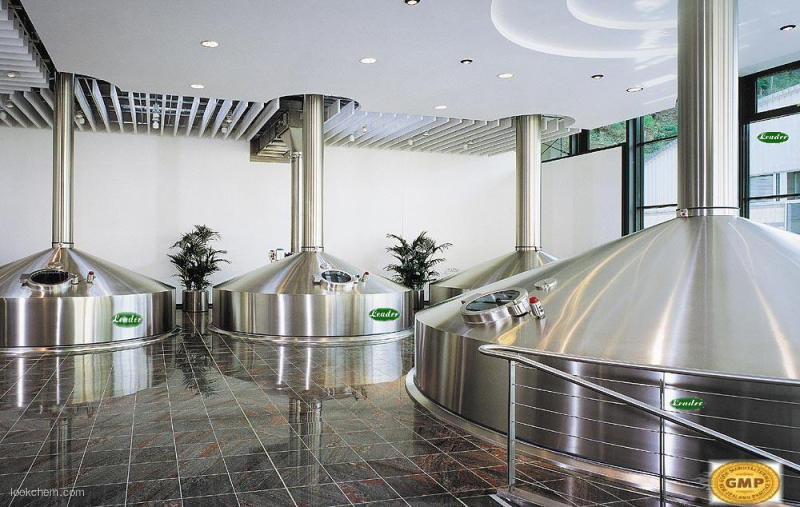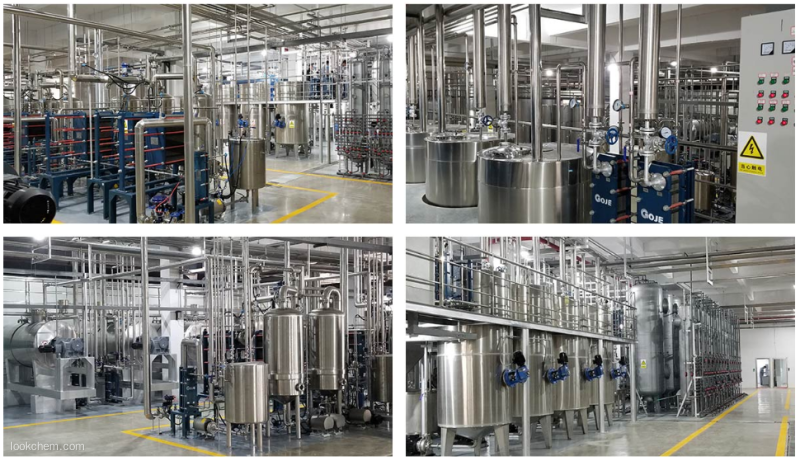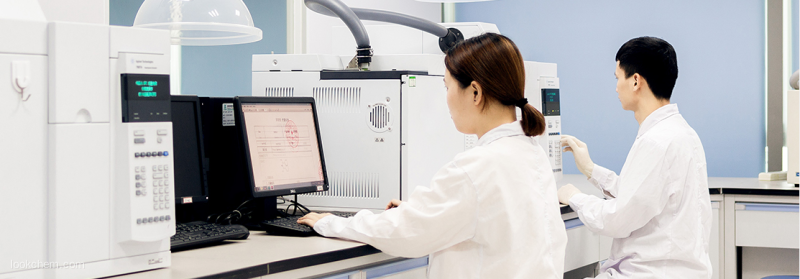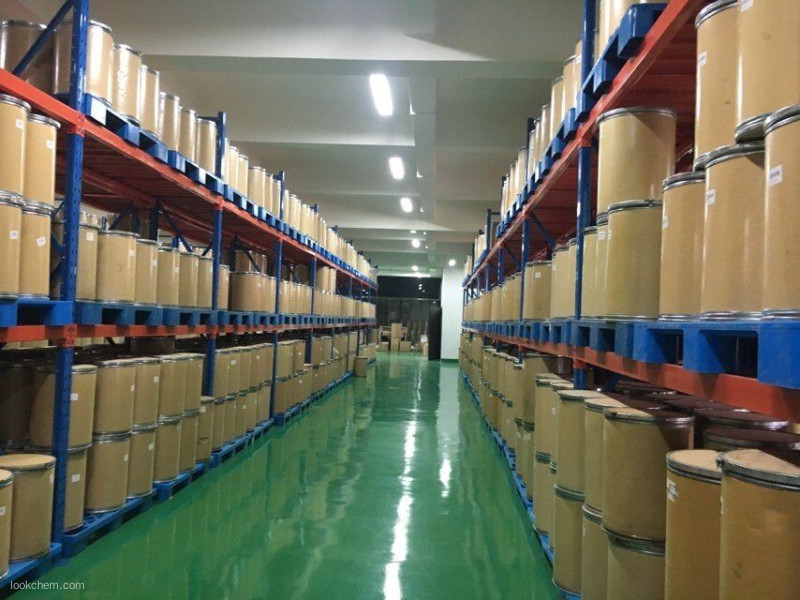PRODUCT DETAILS
| Product Name: |
Abscisic acid |
| Synonyms: |
Abscisic Acid (synthetic);ABSCISIC ACID extrapure;(±)-Abscisic acid, ABA, Dormin, (2Z,4E)-5-(1-Hydroxy-2,6,6-trimethyl-4-oxo-2-cyclohexen-1-yl)-3-methyl-2,4-pentadienoic acid;ABA, Dormin, (2Z,4E)-5-(1-Hydroxy-2,6,6-trimethyl-4-oxo-2-cyclohexen-1-yl)-3-methyl-2,4-pentadienoic acid;(±)-cis,trans-ABA;(±)-cis-2,trans-4-Abscisic acid;DL-Abscisic acid;(±)-cis,trans-ABSCISIC ACID (ABA) |
| CAS: |
14375-45-2 |
| MF: |
C15H20O4 |
| MW: |
264.32 |
| EINECS: |
|
| Product Categories: |
Inhibitors;Pesticide intermediates;Biochemistry;Plant Growth Regulators;Plant Growth Trgulators (Others);Terpenes;Sesqui-Terpenoids;Terpenes (Others) |
| Mol File: |
14375-45-2.mol |
 |
| |
| Abscisic acid Chemical Properties |
| Melting point |
186-188 °C (lit.) |
| Boiling point |
458.7±45.0 °C(Predicted) |
| density |
1.193±0.06 g/cm3(Predicted) |
| Fp |
120°C |
| storage temp. |
2-8°C |
| solubility |
methanol: 50 mg/mL, may be clear to slightly hazy |
| pka |
4.87±0.33(Predicted) |
| Sensitive |
Light Sensitive |
| Sublimation |
120 ºC |
| Merck |
14,11 |
| BRN |
4142666 |
| CAS DataBase Reference |
14375-45-2(CAS DataBase Reference) |
| Safety Statements |
24/25 |
| WGK Germany |
3 |
| F |
8-10 |
| HS Code |
29189900 |
| Provider |
Language |
| SigmaAldrich |
English |
| ACROS |
English |
| ALFA |
English |
| |
| Abscisic acid Usage And Synthesis |
| Description |
Abscisic Acid (ABA) is a phytohormone, a naturally occurring compound in plant. ABA is regarded as an inhibitor of plant growth and therefore usually used as a growth retardant in plant tissue culture. To date, ABA has been primarily used to promote the maturation of somatic embryos and the synthesis of storage reserves in embryos during maturation. ABA also acts as a controlling factor of germination and dormancy in somatic embryos and is generally used to induce somatic embryos into a quiescent state during plant tissue culture and synthetic seed studies. ABA stimulates the stomatal closure, thereby reducing transpirational water loss. Thus, it could be used as an anti-transpiration during the acclimatization of tissue culture-raised plants. |
| References |
[1] Shintaro Munemasa, Felix Hauser, Jiyoung Park, Rainer Waadt, Benjamin Brandt, Julian I Schroeder (2015) Mechanisms of abscisic acid-mediated control of stomatal aperture, 28, 154-162
[2] Manoj K. Rai, N. S. Shekhawat, Harish, Amit K. Gupta, M. Phulwaria, Kheta Ram, U. Jaiswal (2011) The role of abscisic acid in plant tissue culture: a review of recent progress, 106, 179-190
[3] # |
| Chemical Properties |
white to light yellow crystalline powder |
| Uses |
abscission-accelerant; kinetin neucleotide synthesis inhibitor |
| Uses |
Abscisic acid (ABA) is an isoprenoid plant hormone (phytohormone) synthesized in all parts of plants and involved in many plant developmental processes. ABA is involved in establishing dormancy and regulation of stress responses. ABA inhibits fruit ripening, seed germination, photosynthesis and kinetin biosynthesis. |
| Agricultural Uses |
The name abscisic acid (ABA), a weak organic acid, is derived from the ability of a substance to promote abscission. Abscission is the natural detachment of leaves, branches, flowers, etc. from plants. Abscisic acid is a naturally occurring plant growth inhibitor, and is one of five major plant hormones. It carries out a number of important functions in the growth and development of plants. It is a key factor controlling stomatal movements, leaf senescence and bud and seed dormancy. Abscisic acid (ABA) is present in leaves, fruits and seeds, and is distributed throughout the plant body. The synthesis of ABA takes place mainly in chloroplasts. The rate of synthesis of ABA increases when the plant is under stress. Chemically, abscisic acid is a member of the terpenoid family. |
| Metabolic pathway |
Plant growth regulators: promotion of maturation of the somatic embryo of white spruce Somatic embryo suspension cultures of white spruce containing ( +)-abscisic acid (ABA) metabolize (+ )- ABA almost completely to yield quantitatively phaseic acid with slight further transformation into dihydrophaseic acid within 7 days. (-)-ABA remains essentially unchanged under the same culture conditions, and when the cells are supplied with racemic (±)-ABA, only the (+ ) enantiomer is metabolized. |
|
|
|
|
|
|
|
|
|
|
About Our Group
Leader Biochemical Group is a large leader incorporated industry manufacturers and suppliers of advanced refined raw materials From the year of 1996 when our factory was put into production to year of 2020, our group has successively invested in more than 52 factories with shares and subordinates.We focus on manufacture Pharm & chemicals, functional active ingredients, nutritional Ingredients, health care products, cosmetics, pharmaceutical and refined feed, oil, natural plant ingredients industries to provide top quality of GMP standards products.All the invested factories' product lines cover API and intermediates, vitamins, amino acids, plant extracts, daily chemical products, cosmetics raw materials, nutrition and health care products, food additives, feed additives, essential oil products, fine chemical products and agricultural chemical raw materials And flavors and fragrances. Especially in the field of vitamins, amino acids, pharmaceutical raw materials and cosmetic raw materials, we have more than 20 years of production and sales experience. All products meet the requirements of high international export standards and have been recognized by customers all over the world. Our manufacture basement & R&D center located in National Aerospace Economic & Technical Development Zone Xi`an Shaanxi China. Now not only relying on self-cultivation and development as well as maintains good cooperative relations with many famous research institutes and universities in China. Now, we have closely cooperation with Shanghai Institute of Organic Chemistry of Chinese Academy of Science, Beijing Institute of Material Medical of Chinese Academy of Medical Science, China Pharmaceutical University, Zhejiang University. Closely cooperation with them not only integrating Science and technology resources, but also increasing the R&D speed and improving our R&D power. Offering Powerful Tech supporting Platform for group development. Keep serve the manufacture and the market as the R&D central task, focus on the technical research. Now there are 3 technology R & D platforms including biological extract, microorganism fermentation and chemical synthesis, and can independently research and develop kinds of difficult APIs and pharmaceutical intermediates. With the strong support of China State Institute of Pharmaceutical Industry (hereinafter short for CSIPI), earlier known as Shanghai Institute of Pharmaceutical Industry (SIPI), we have unique advantages in the R & D and industrialization of high-grade, precision and advanced products. Now our Group technical force is abundant, existing staff more that 1000 people, senior professional and technical staff accounted for more than 50% of the total number of employees, including 15 PhD research and development personnel, 5 master′ S degree in technical and management personnel 9 people. We have advanced equipment like fermentation equipment and technology also extraction, isolation, purification, synthesis with rich production experience and strict quality control system, According to the GMP required, quickly transforming the R&D results to industrial production in time, it is our advantages and our products are exported to North and South America, Europe, Middle East, Africa, and other five continents and scale the forefront in the nation, won good international reputation. We believe only good quality can bring good cooperation, quality is our key spirit during our production, we are warmly welcome clients and partner from all over the world contact us for everlasting cooperation, Leader will be your strong, sincere and reliable partner in China.
Our Group profiles
Our Factories production lines



Our Factories R&D ability


Our Factories warehouse




 Premiumsupplier
Premiumsupplier 



